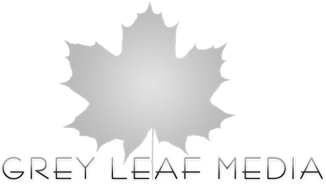First impressions are important. Whether interviewing for a job, meeting with a client, or giving a presentation, this common sense conclusion seems to be ingrained in most of us. When the stakes are either not as high, or not as personal, this is often forgotten or misunderstood (wearing nice fall clothes before going for a hike, for example). When it comes to appearance, it doesn’t work to look good if the visual impression doesn’t match the context. This should also be kept in mind when designing a website.
In an age where people use search engines to research a company or organization before making any plans or decisions, the appearance and feel of a website is important. In fact, your website is often the first impression that your potential customers will see. How it looks, and how it makes them feel when they use it each give a conscious or subconscious impression about your brand. Does the design feel clean and fresh? Artistic and alive? Down to earth and practical? How should it feel in order to accurately represent your brand? How should it look to make your clients feel that you really understand them?
Know Thyself
First, revisit your brand’s identity. What is your mission? What are your values? What are you selling? Who are you selling it to? Is there a cultural or sub-cultural context? These should all be considered when deciding the general aesthetic of your website. Once we have a general idea of how it should feel, it’s time to move into the content we are designing for. Related: Getting started with your content strategy
Know Your Audience
What is your message? What makes your brand unique? What kind of a personality does your brand have? These should be woven together when deciding the information architecture, how content is organized and displayed, of your website. Your website should represent your brand in a way that your intended audience can understand and see themselves reflected back in. That is, your website should be relatable.
Be Crystal Clear
The design should make sense. Navigation should be easy. They should be able to tell right away what action they should take. Shop? Call? Order? Email? Read more? Restrict the available choices, and make them simple. The words and the voice of your content should keep them engaged as they choose from the available actions. The design exists to organize and display the content and calls to action. That is, design is the art of solving problems, not art for art’s sake. In web design, the “problem” we are solving is effectively communicating your brand, and encouraging site visitors to take desired actions.
Be Interesting
The design should be interesting, but modest. Clean designs with photographs and white space make sense to visitors without asking them to interpret very much before getting to the message and calls to action. This respects their time, their energy, and keeps their focus where it belongs: on your content. A little interactive design can go a long way to adding interest without adding clutter.
Be Flexible
The design should be responsive. Today, people do more with their smartphones, and depend on them as a primary means of searching and browsing the web. If your website doesn’t look good on a smartphone’s browser, you are alienating a large, and growing, demographic. It’s 2018. Every new website should be ready for a wide range of screen sizes.
Be Familiar
The design should look and feel like it’s from the same family as other assets related to your brand. I might even argue that this is the single most important point to remember. Have you ever gone to a website only to realize that you were in the wrong place just by how it looked and felt? Did you immediately look for the logo to verify that your instinct was right? You don’t want to give your visitors that false negative instinct when visiting a website. Your brand has a personality, which makes sense. After all, business is personal. Your website’s design should represent this personality.
If I Were To Summarize…
While looks alone probably won’t make your business successful, it can go a long way toward helping your future and existing clients. In a sense, your website is taking the place of an elevator pitch, a casual conversation, or a scheduled private meeting. It is available to anyone with internet access any day or time. Creating content that successfully achieves this is important, and the bare minimum we should do with design is to simply not misrepresent the content. Better still, we can support, and even enhance this same great content with good design.
Industrial designer Dieter Rams famously said that good design is as little design as possible. A similar sounding idea that really gets to the heart of good design for a website is this:
“Good design, when it’s done well, becomes invisible. It’s only when it’s done poorly that we notice it.”
– Jared Spool


